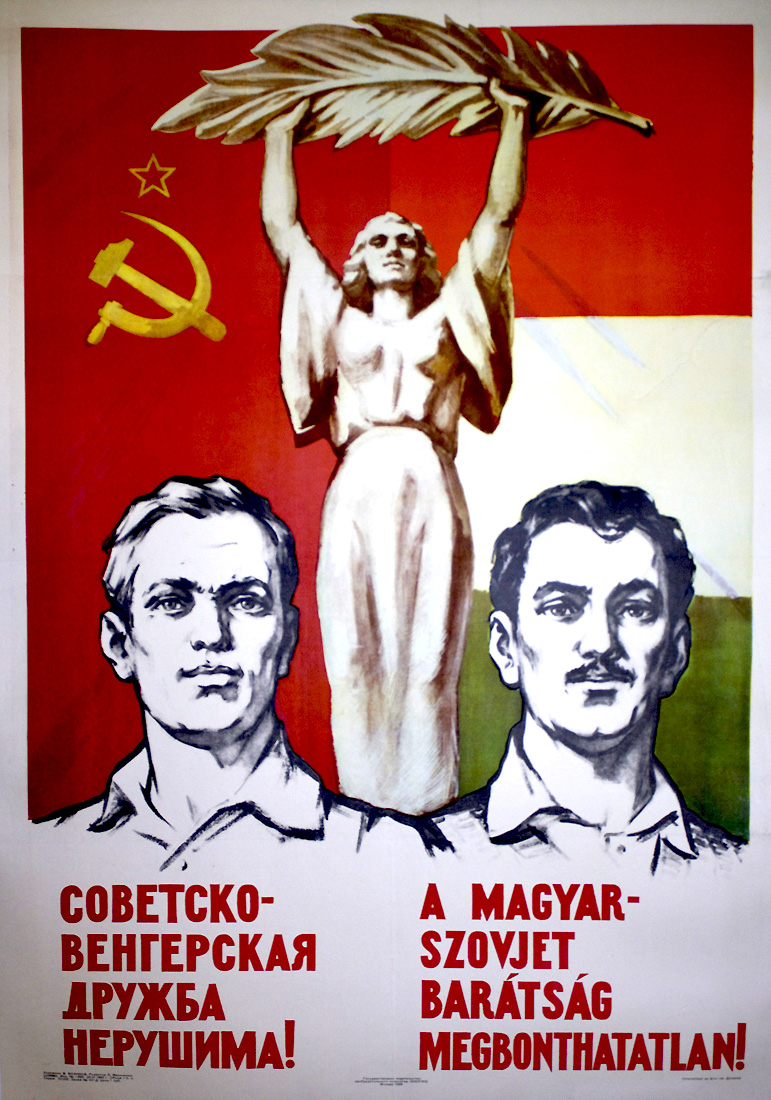
¡La amistad entre la Unión Soviética y Hungría es indestructible!
Número de Cartel: PP 517
Información sobre el cartel: Poster is in Hungarian and Russian languages.
Tamaño: 36.5x27
Tipo de cartel: Litografía y Offset
Fecha de publicación: 1958
Editores: Editor Ia. Marinenko.
Información técnica: June 26, 1968. Publication No. 1-892. Volume 1 sheet of paper. Order No. 431-D. Price 1 ruble.
Ediciones: 70,000
Número de Glavlit: Sh04866.
En el catologo: PP 517 Cold War b
Idioma: Húngaro, Ruso
Idiomas Adicionales: Ruso
Artista: Volikov, Vadim Petrovich — Воликов, Вадим Петрович
Vadim Petrovich Volikov was a graphic designer and a poster artist. As an art student in Leningrad, Volikov studied at the Academy of Art and Industry (V.I. Mukhina Higher School of Art and Design) from 1949 to 1955. While there, he concentrated in monumental decorative arts but he mainly worked in glass design. After his schooling and in order to support himself, he turned to designing political posters and book illustration. By the late 1950s, Volikov ...
Leer más...
Imprenta: Printing plant named for Dunaev, [Moscow] — Типография имени Дунаева, [Москва]
The Dunaev printing plant was located at 9 Bolshaia Polianka in Moscow. Headquartered inside the former Menert Brothers printing plant, during the 1920s, the firm was named in honor of the Bolshevik leader Evlampii Dunaev (1877-1919) who served as assistant chairman of the Soviet of Nizhny Novgorod. Dunaev was also a member of the provisioning committee and he served on the Nizhny Novgorod Council of Local Economy. During the Civil War, he reportedly died from typhus. ...
Leer más...
Editorial: IzoGiz (State Publishing House of Fine Art), Moscow — Изогиз (Государственное издательство изобразительного искусства), Москва
The history of IzoGiz begins with the formation of Ogiz, the Association of the State Book and Magazine Publishers. In 1930, the Sovnarkom of the Russian Socialist Federative Soviet Republic established Ogiz to centralize publishing under a monopoly in order to eliminate duplication of printed material, to streamline and control publishing production and its output, and to create a base for marketing books, training and technical manuals. In 1931, the Central Committee of the USSR ordered certain ...
Leer más...